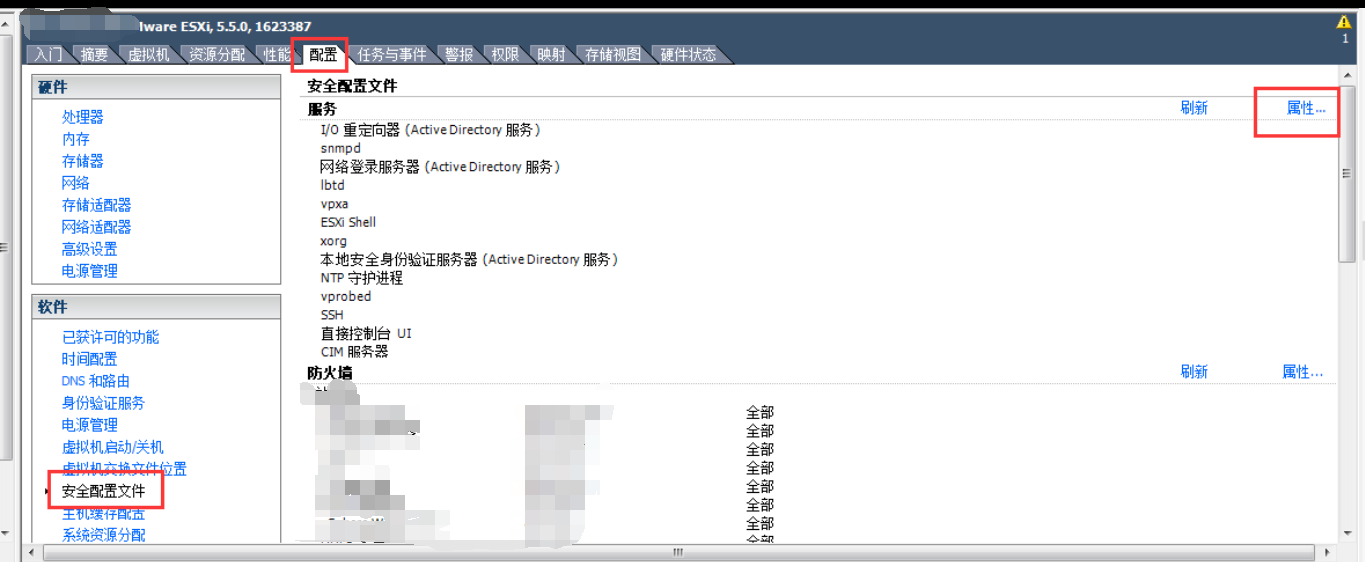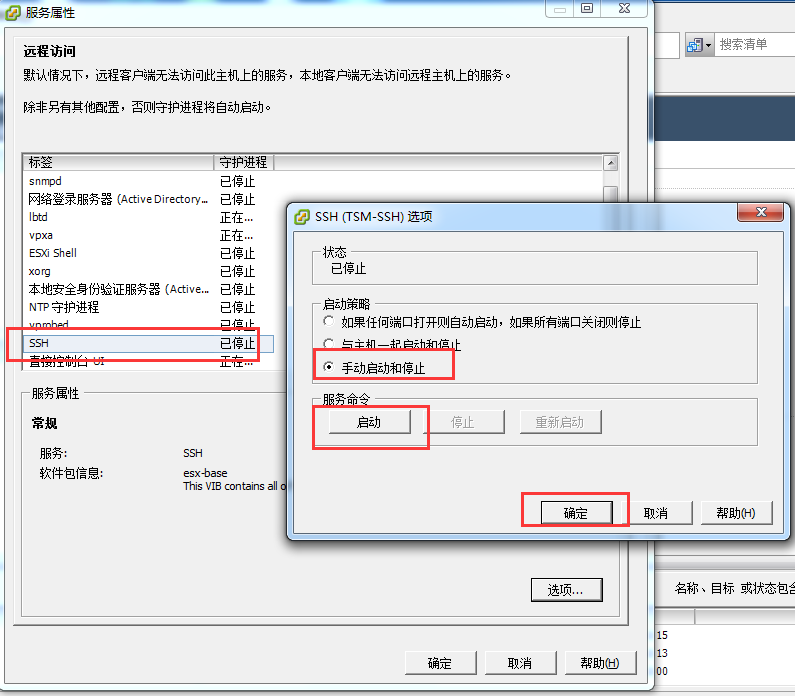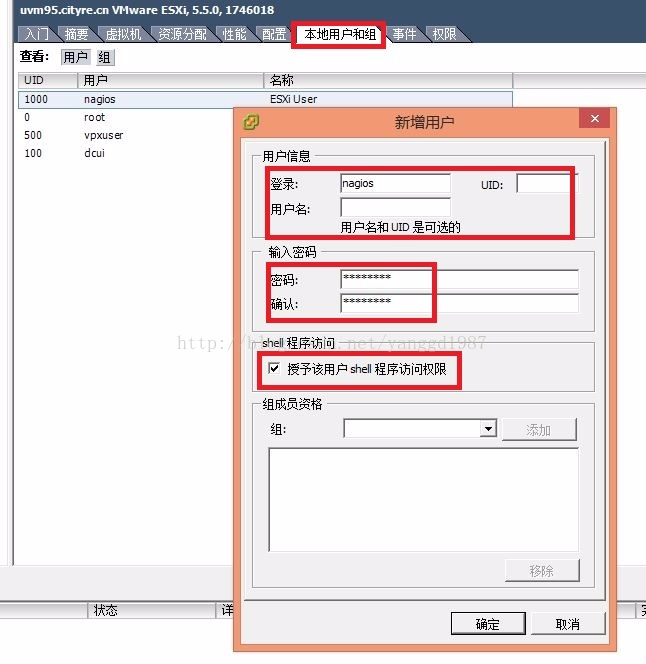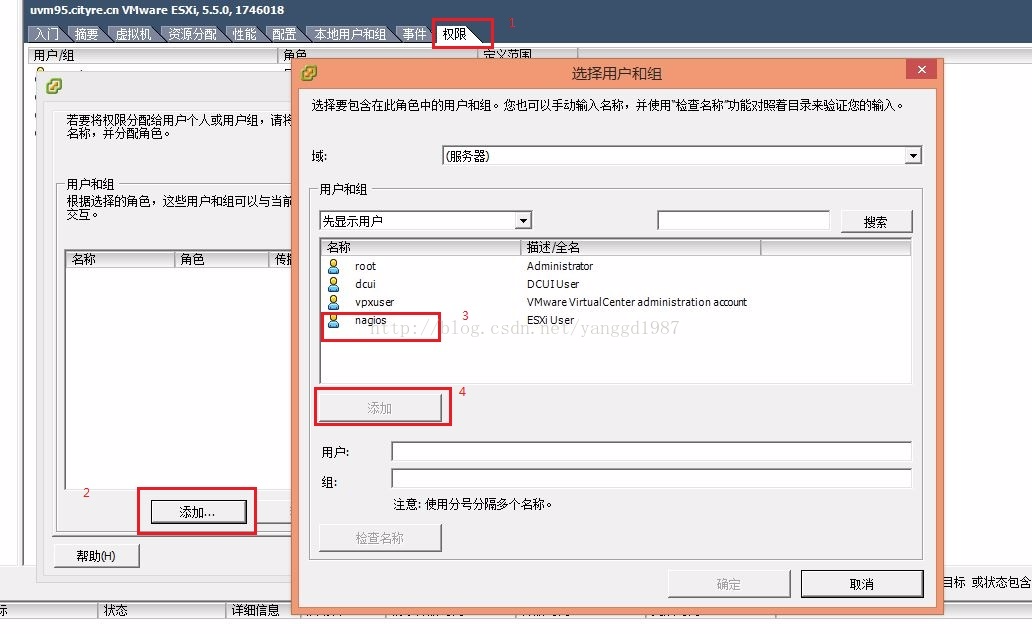首先,该博文大部分内容来自网络,少部分是自己监控过程中遇到的问题。如果有侵权,请联系告知!!!
现在互联网公司,有能力的都是自己研发监控系统,要么就是zabbix或者小米的监控,还都二次开发等等,可能使用nagios的不是那么多。哈哈,做个记录,仅供参考!!!
<准备部署使用open-Falcon(小米开源)>
以下内容大部分来自网络:
普通的Dell服务器硬件监控我们可以通过nagios+openmanage来实现,但是vsphere环境中的Esxi主机的硬件监控怎么实现呢?
这里有两种方案:
1.通过nagios插件check_esx来实现,这种方式需要安装vmware vsphere sdk for perl工具包
2.通过nagios插件check_esxi_hardware.py来实现,此插件使用python写的。
感人感觉第二种方式比较简单些,python在linux天生内置,还需要更多理由吗?
先看看官网介绍:
http://www.claudiokuenzler.com/nagios-plugins/check_esxi_hardware.php#.VWV5_JCUfTA
其中:
Requirements
- Python must be installed
- The Python extension pywbem must be installed
Windows users click here for a step-by-step guide how to install Python and PyWBEM on a Windows server.
- If there is a firewall between your monitoring and ESXi server, open ports 443 and 5989
以上是实现监控的先决条件:
1.python必须安装
2.python的扩展包pywbem必须安装
3.你的Esxi主机的443,5989端口必须对nagios监控端开放
好了,下面就赶紧实施吧!
1.安装check_essi_hardware.py
-
cd /usr/local/nagios/libexec wget http://www.claudiokuenzler.com/nagios-plugins/check_esxi_hardware.py
这个链接下载可能会失败,网上有,可自行搜索下载。
chown nagios.nagios check_esxi_hardware.py chmod 755 check_esxi_hardware.py
-
[root@nagios libexec]# ./check_esxi_hardware.py Traceback (most recent call last): File "./check_esxi_hardware.py", line 222, in <module> import pywbem ImportError: No module named pywbem [root@nagios libexec]# ./check_esxi_hardware.py -h Traceback (most recent call last): File "./check_esxi_hardware.py", line 222, in <module> import pywbem ImportError: No module named pywbem
-
cd /usr/local/src wget http://downloads.sourceforge.net/project/pywbem/pywbem/pywbem-0.7/pywbem-0.7.0.tar.gz?r=http%3A%2F%2Fsourceforge.net%2Fprojects%2Fpywbem%2Ffiles%2Fpywbem%2F&ts=1299742557&use_mirror=voxel tar -zxvf pywbem-0.7.0.tar.gz cd pywbem-0.7.0 python setup.py build python setup.py install --record files.txt
yum install pywbem -y
-
[root@cscc libexec]# ./check_esxi_hardware.py Traceback (most recent call last): File "./check_esxi_hardware.py", line 251, in <module> import pkg_resources ImportError: No module named pkg_resources [root@cscc libexec]#
[root@cscc libexec]# yum install python-setuptools -y
使用yum基本上不会涉及下面的问题。
注意:(1).不要使用pywbem-0.8.0版本,这个版本有bug导致我们的插件无法使用
(2).python setup.py install --record files.txt 记录安装目录的目的就是为了方便卸载插件,cat files.txt | xargs rm -rf
3.正常使用插件
-
[root@nagios libexec]# ./check_esxi_hardware.py no parameters specified Usage: check_esxi_hardware.py https://hostname user password system [verbose] example: check_esxi_hardware.py https://my-shiny-new-vmware-server root fakepassword dell or, using new style options: usage: check_esxi_hardware.py -H hostname -U username -P password [-V system -v -p -I XX] example: check_esxi_hardware.py -H my-shiny-new-vmware-server -U root -P fakepassword -V auto -I uk or, verbosely: usage: check_esxi_hardware.py --host=hostname --user=username --pass=password [--vendor=system --verbose --perfdata --html=XX] Options: --version show program's version number and exit -h, --help show this help message and exit Mandatory parameters: -H HOST, --host=HOST report on HOST -U USER, --user=USER user to connect as -P PASS, --pass=PASS password, if password matches file:<path>, first line of given file will be used as password Optional parameters: -V VENDOR, --vendor=VENDOR Vendor code: auto, dell, hp, ibm, intel, or unknown (default) -v, --verbose print status messages to stdout (default is to be quiet) -p, --perfdata collect performance data for pnp4nagios (default is not to) -I XX, --html=XX generate html links for country XX (default is not to) -t TIMEOUT, --timeout=TIMEOUT timeout in seconds - no effect on Windows (default = no timeout) -i IGNORE, --ignore=IGNORE comma-separated list of elements to ignore --no-power don't collect power performance data --no-volts don't collect voltage performance data --no-current don't collect current performance data --no-temp don't collect temperature performance data --no-fan don't collect fan performance data
其中-U 用户名 -P 密码 -V服务器类型,有dell,hp等,根据实际情况-v打印状态信息-p结合画图工具画图
-I 输出链接到dell或其他官网,方面找解决方案-t超时时间-i忽略某项监控内容
--no-power 不采集电源信息,以下雷同。
4.给Esxi主机设置只读用户
如果使用的是Vcenter,首先需要打开监控esxi主机的ssh;


通过VMware vSphere Client连接主机,创建用户(只读),注:密码有复杂度要求!
(1)先登录Esxi主机,在“本地用户和组”标签中,空白处右键“添加”,即可添加用户。

(2)将nagios用户设置成“只读角色”。在“权限”标签中,空白处右键“添加权限”,然后按下图操作

ok,只读用户nagios就添加完毕。
-
[root@nagios-server-176 libexec]# ./check_esxi_hardware.py -H 192.168.0.100 -U nagios -P nagios -V dell Traceback (most recent call last): File "./check_esxi_hardware.py", line 617, in <module> wbemclient = pywbem.WBEMConnection(hosturl, (user,password), no_verification=True) TypeError: __init__() got an unexpected keyword argument 'no_verification'

-
[root@nagios-server-176 libexec]# ./check_esxi_hardware.py -H 192.168.0.100 -U nagios -P qwe123,./,./ -V dell UNKNOWN: Authentication Error
-
~ # cat /etc/security/access.conf # This file is autogenerated and must not be edited. +:dcui:ALL +:root:ALL +:vpxuser:ALL +:vslauser:ALL -:nagios:ALL -:ALL:ALL
-
[root@nagios libexec]# ./check_esxi_hardware.py -H 10.10.10.1 -U nagios -P nagios -V dell OK - Server: Dell Inc. PowerEdge R610 s/n: XXXXXX System BIOS: XXXXXXXXXX
6.下面将将其加入到监控系统中吧。
(1)先在commands.cfg中添加命令。
-
vim /usr/local/nagios/etc/objects/commands.cfg define command { command_name check_esxi_hardware command_line $USER1$/check_esxi_hardware.py -H $HOSTADDRESS$ -U $ARG1$ -P $ARG2$ -V $ARG3$ -I isolutions -p -t 20 }
-
define service{
==>根据自己公司配置,定义监控服务项;
}
(3)监控效果图

其中href中的链接就是我们在check_esxi_hardware.py中-I参数生成,方便我们直接查找解决方案。